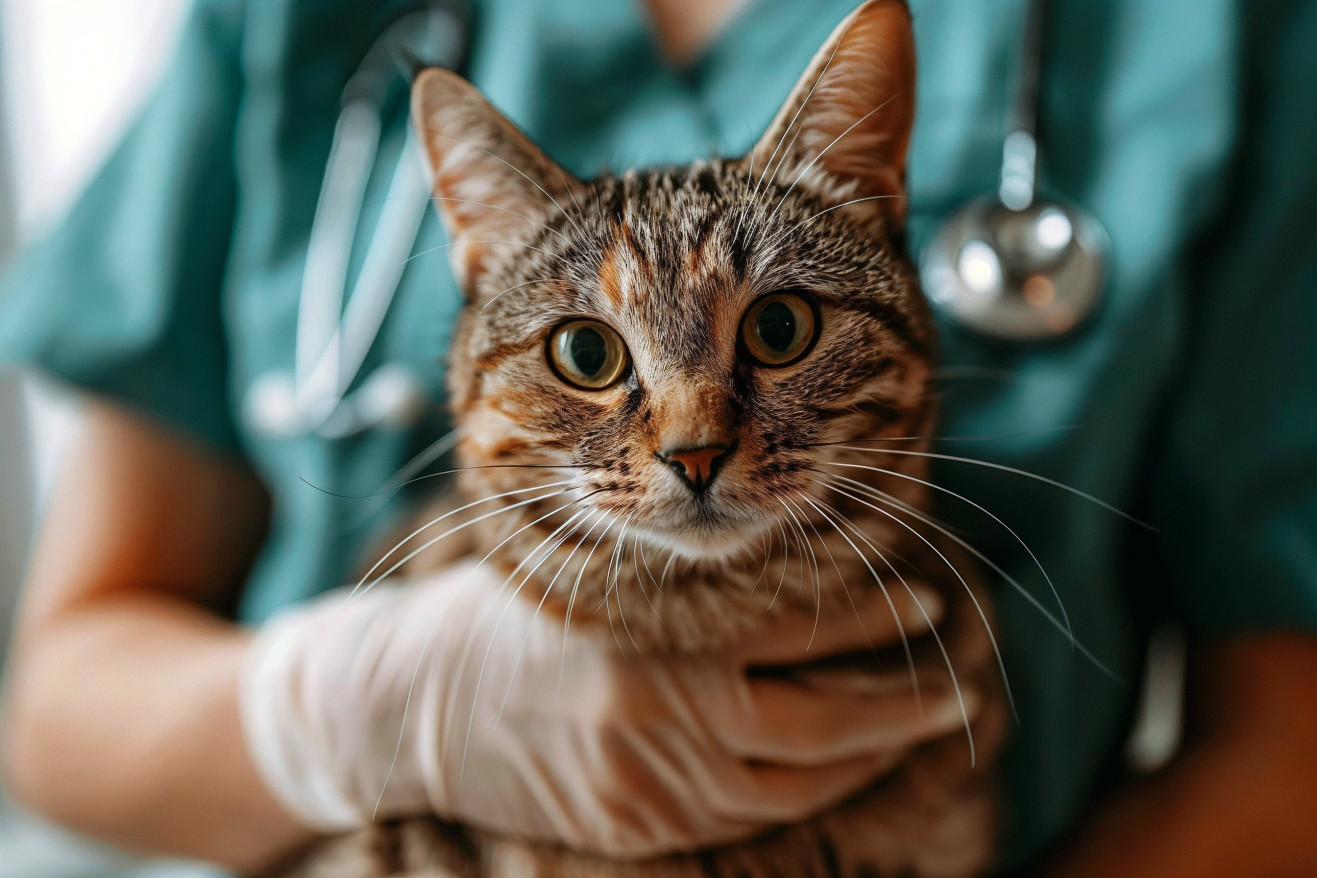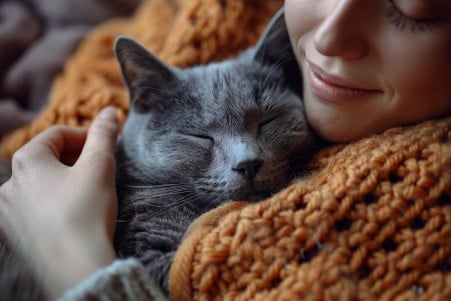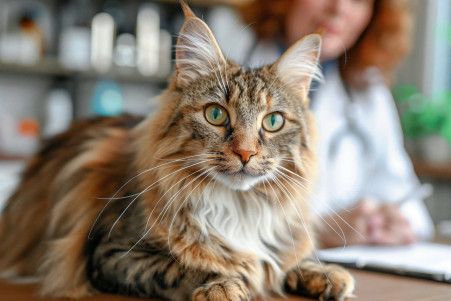Can You Spay a Cat in Heat? Understanding Timing and Risks
15 March 2024 • Updated 15 March 2024

If you’re trying to figure out when to schedule a spay, it can be hard to figure out when the best time is, especially if your cat is in heat. While it is possible to spay a cat in heat, it’s not recommended.
The increased blood flow to the reproductive organs during estrus can make the surgery more difficult, which, in turn, increases the risk and cost of the surgery. For this reason, most veterinarians will recommend waiting until the heat cycle is over before spaying.
As this topic is explored further, insights from veterinary medicine and scientific research will be examined to shed light on the complexities of spaying cats during their heat cycle.
By focusing on animal health and veterinary surgery disciplines, this article aims to provide a clear understanding of the physiological aspects, potential risks, and post-surgical care involved. Readers will discover alternative solutions and best practices to make informed decisions for their feline friends’ health and well-being.
Can you spay a cat in heat?
Veterinary Perspectives on Spaying Cats in Heat
The hormonal changes of the estrus cycle have a number of physiological effects that can impact the spaying process. One of the most notable is that the blood vessels that supply the reproductive organs become swollen and more fragile, which can lead to increased bleeding and tissue trauma during surgery. As a result, spaying a cat in heat is more difficult and more expensive than spaying a cat that is not in heat.
That said, there are some situations in which a veterinarian may recommend spaying a cat in heat. For example, according to The Spruce Pets, a veterinarian may recommend spaying a cat in heat if the owner is having a hard time dealing with a cat that is trying to escape constantly or is marking inappropriately.
That said, owners should think carefully before agreeing to spay a cat in heat and work closely with their veterinarian to determine whether the increased surgical risks outweigh the risk of the cat mating and becoming pregnant.
Veterinarians recommend that cats are spayed when they are not in heat, ideally before their first estrus cycle. If the cat is already in heat, veterinarians recommend waiting until the cycle is over to minimize the risk of complications during surgery. This will help ensure that the surgery goes smoothly and that the cat has an easier recovery.
Recovery After Spaying a Cat in Heat
Post-operative care is important for a cat that has been spayed while in heat. PetMD explains that the first 24 hours are especially important, and it’s vital to watch for signs of a lack of appetite, excessive tiredness, and difficulty urinating. It’s also important to watch for any signs of distress, as the swollen blood vessels from the heat cycle can cause more swelling and the potential for bleeding after the surgery.
In terms of practical care, pet owners need to make sure that they are following the vet’s instructions in terms of keeping their cat comfortable and limiting their activity.
The vets at Tracy stress the importance of pain medication and the need to make sure that you are giving your cat their pain medication unless a vet tells you otherwise. Cats should avoid high-impact activities like jumping and running for at least 10–14 days to avoid issues like the incision opening.
Cats Protection suggests that pet owners set up a warm, comfortable recovery area that’s away from the hustle and bustle of the rest of the house to help their cat have a more comfortable recovery.
Pet owners need to make sure that they are keeping an eye out for any signs of trouble and contact their vet if they notice any changes in their cat’s behavior or the way that their wound is healing.
It’s important to make sure that your cat doesn’t lick or chew at their incision, and a cone can help with this. This can help prevent infection and promote healing.
The Complexities of the Feline Estrous Cycle
Knowing the details of the feline estrous cycle is important for anyone thinking about spaying. The article Feline Reproduction on ScienceDirect describes the different phases of the cat reproductive cycle, including proestrus, estrus, interestrus, and anestrus.
Estrus, which can last anywhere from 2 to 19 days, is the phase when cats show the most obvious signs of being in heat, including vocalizing, showing more affection to their human caregivers, and assuming the mating position known as lordosis.
This phase is also characterized by high levels of the hormone estradiol, which can lead to vasodilation and make spaying riskier due to the potential for increased bleeding.
The length and severity of the estrous cycle are also affected by other factors, such as the amount of daylight cats are exposed to, with the cycle stopping during the shorter days of the year.
As Aime K Johnson explains in the Journal of Feline Medicine and Surgery, cats are seasonally polyestrous, meaning their cycles are affected by the length of the day. This is another reason why the timing of spaying is so important.
There are also myths about the estrous cycle that can lead to misunderstandings. For example, an extended period of estrus doesn’t necessarily mean there’s something wrong with a cat; it can be a result of the hormonal changes that are part of the normal progression of the cycle.
People who are aware of the many behavioral and physiological changes that take place during the feline estrous cycle will be better able to anticipate and respond to their pet’s health needs, especially when it comes to spaying and its impact on long-term health.
Long-Term Health Impact of Spaying Cats
The choice to spay a cat has long-term health implications, and research has shown that these can be both positive and negative. A systematic review published in Nutrition Research Reviews found that spaying cats before 2.5 years of age significantly decreases the risk of developing malignant mammary gland tumors, which is the most common concern in female cats that have not been spayed.
In fact, spaying before the first heat cycle can decrease the risk by 86%, which shows just how important it is to spay cats at the right time for their health.
On the other hand, the fact that spaying during estrus has been associated with increased risks of certain health issues has led to concerns about the potential negative long-term health impacts of spaying.
While there hasn’t been much research into the long-term health impact of spaying cats during estrus, it’s possible that the time of the spay could impact certain health outcomes, including the development of neoplasia or urinary issues. For example, a study in the Journal of Feline Medicine and Surgery found that neutering increased plasma luteinising hormone concentrations in cats, which could have implications for their health.
Ultimately, the choice of when to spay a cat will depend on the balance between these long-term health benefits and risks. Pet owners should be aware of these factors and talk to their veterinarians about them so that they can make the best choice for their cats.
Other Options to Spaying While in Heat
If you’re looking for other options to spaying while in heat, hormone suppression is a non-surgical way to control fertility. Hormone-based contraceptives like birth control pills for cats that suppress the estrus cycle are available, but they are only a temporary fix. They are also not recommended for long-term use due to the potential side effects, including an increased risk of cancer, according to the College of Veterinary Medicine at Cornell University.
The future of pet contraception is bright when it comes to the development of non-surgical options. Reversible injectable contraceptives and implants could change the game for feline family planning, according to a study in the Journal of Feline Medicine and Surgery. These options can suppress the estrus cycle for a longer period of time, but they don’t require surgery.
The decision of which option to use for controlling a cat’s reproductive system will depend on a number of factors. While spaying is the only way to ensure that a cat won’t develop ovarian or uterine cancer, non-surgical options can provide control without the need for immediate surgery, which may be beneficial in some cases.
Pet owners will need to weigh the pros and cons and talk to their vet to decide which option will be best for their cat’s health and their own situation.
Final Thoughts on Spaying Cats in Heat
As we’ve delved into the topic of spaying cats in heat, we’ve covered the many nuances of the procedure during the estrus phase. From the physiological changes that make surgery more challenging to the impact on recovery, it’s evident that timing is an important factor in the decision to spay.
We’ve discussed the details of the feline estrous cycle, stressed the importance of aftercare, and delved into the long-term health implications of spaying. We’ve also looked at other options for spaying, weighing the pros and cons of each against the backdrop of the latest in veterinary science.
It’s important to be well-informed to make the best choices for our feline friends. This includes understanding the risks and requirements of spaying in heat, as well as staying up-to-date through continued learning and open communication with veterinarians. For pet parents, a commitment to knowledge and expert consultation is the foundation of excellent cat care. With this in mind, pet parents can confidently and effectively address the many challenges of feline care.


